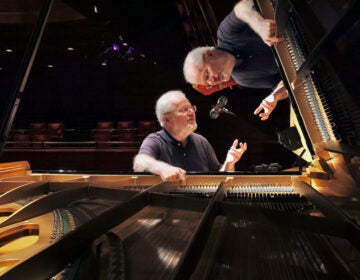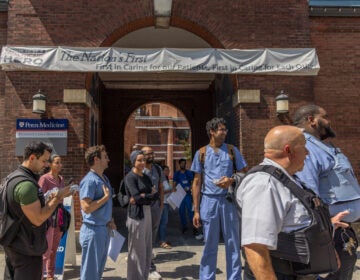Penn researchers are using CT scanning to unlock the secrets of centuries-old basses and string instruments
CT scans are typically used to look for cancer, organ damage and other medical issues. But they can also help examine other kinds of objects and materials.
Listen 5:03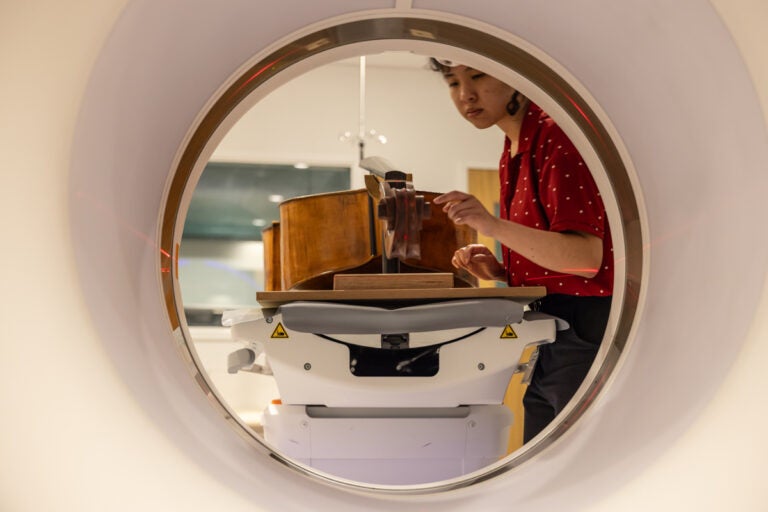
U-Penn Phd.D student Leening Liu works to align the bass in the CT scanner for. (Kimberly Paynter/WHYY)
From Philly and the Pa. suburbs to South Jersey and Delaware, what would you like WHYY News to cover? Let us know!
The CT machine stood ready like a giant white gleaming donut, but the patient wasn’t quite cooperating.
It was evening, and the third floor of the Pavilion at the Hospital of the University of Pennsylvania was mostly empty. Medical testing and imaging during regular business hours were done for the day.
But in this one exam room, half a dozen people crowded around the CT scanner bed, trying to position the patient just right.
“Can we move it?” asked Leening Liu, a PhD student at the University of Pennsylvania, after examining one angle. “Let’s go this way more.”
The patient on the bed wasn’t of flesh and bone, and there was no disease that the machine could scan for. Instead, this was a 19th-century double bass, the largest of the string instruments, on loan to the Philadelphia Orchestra.
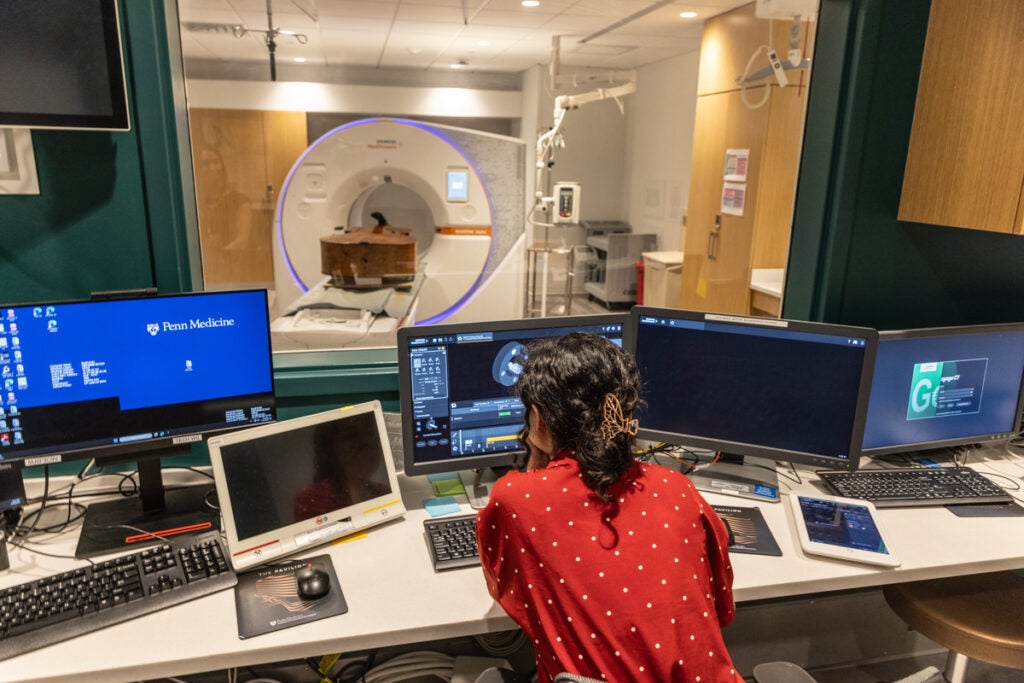
“It’s much lighter than a comparable patient,” joked Peter Noël, an associate professor of radiology at Penn and director of CT research at the hospital.
CT scanners use some radiation to quickly produce detailed images of the inside of people’s bodies. They’re used to check for diseases like cancer, issues like blood clots, or injuries to the brain and internal organs.
They can also offer an inside view of inanimate objects and shed light on materials, production methods, age or the scars of time. Noël likes to use this medical technology for this kind of sleuthing research to unlock the mysteries of these objects. Scanning string instruments is his latest project.
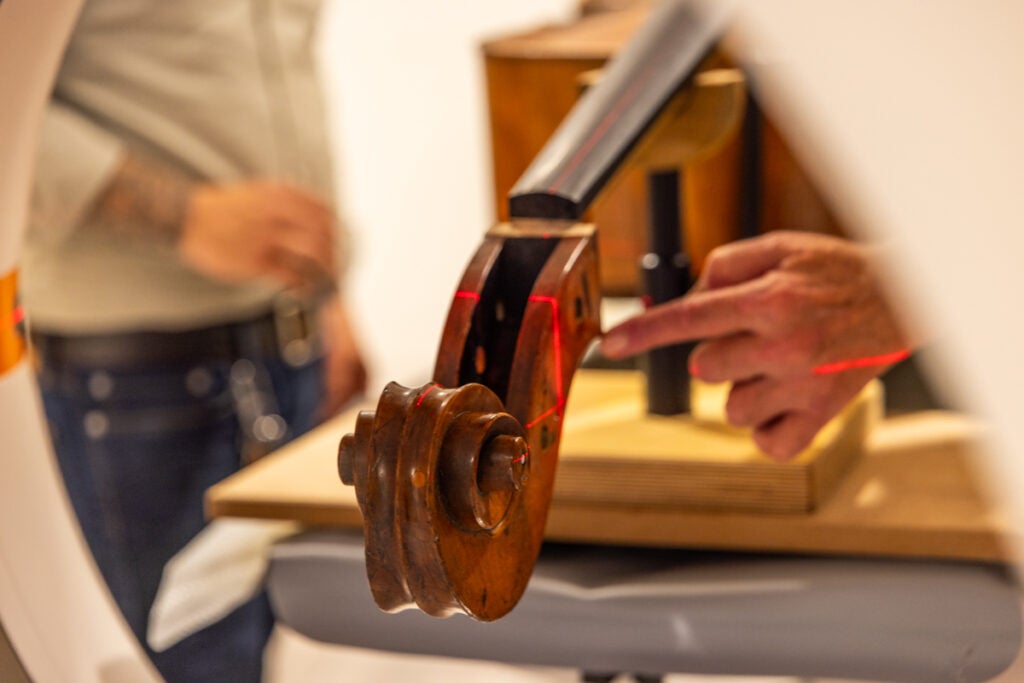
The goal of imaging older double basses is to find out how to best preserve and restore these rare and priceless instruments, and how to make new ones more sustainably without sacrificing their unique low and deep “voices.”
“There are so many examples of where imaging can help, and I think that’s also where we can connect fantastically with the community, because these are everyday problems,” Noël said. “I mean, I don’t know if a bass is an everyday problem, but it’s a more positive thing and I think we can give back in this way.”
The double bass being scanned is a massive instrument over 5 feet tall. The four strings that typically run down the center had been removed for scanning. It’s considered a rare model and insured at over $200,000.
However, the bass’s owner, Mark Kindig, of Bethesda, Maryland, said it’s likely worth more in sale value, as that takes into account any previous famous players and owners, the quality and condition of the piece, its age, and the original luthier who crafted it in the first place.
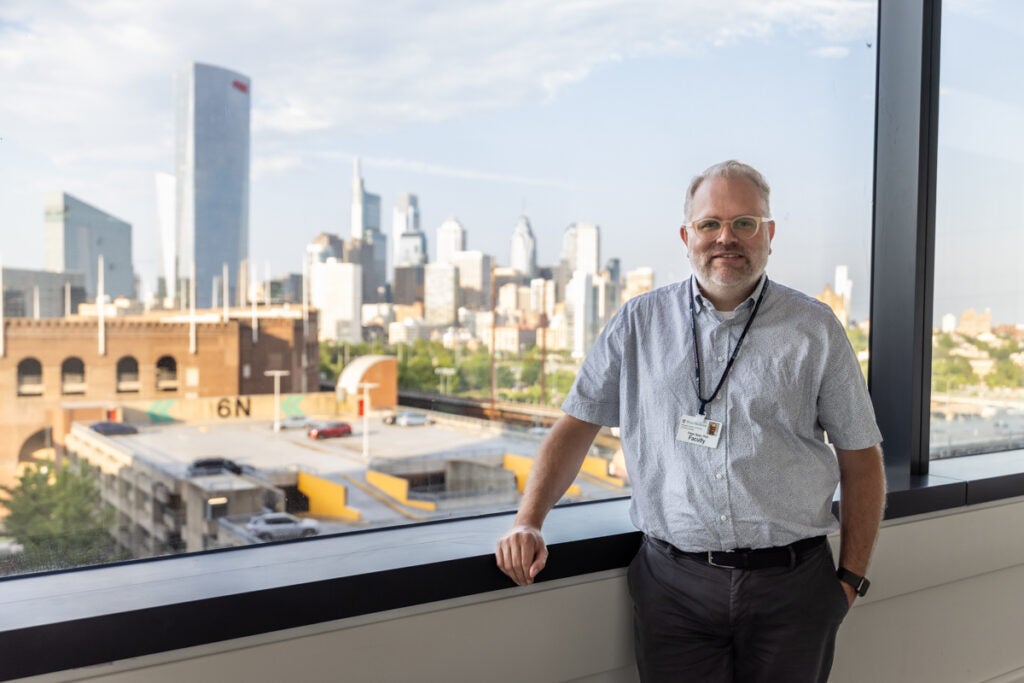
The double bass at the hospital was made an estimated 175 years ago by luthier Charles Theress.
The CT scan takes slices of images that can show the density of the wood. It can also reveal other characteristics, like how the wood has dried or warped over time, or what kind of repairs may have been made in the past.
“These scans, certainly in a restoration aspect, are very valuable because you can detect termite infestation, wood worms, damage that is subterranean, that you can’t typically see,” said Zachary Martin, a luthier, bass restorer and maker from Providence, Rhode Island.
More detailed information could also help modern bass makers create new instruments with a similar mastery of luthiers from centuries ago. Duane Rosengard, Philadelphia Orchestra double bassist and instrument scholar, watched the CT scan process with great interest.
The bass is played by one of his colleagues in the orchestra. Rosengard said the scan results could lead to building new instruments in sustainable ways.
“This is made out of what is already a nearly exhausted type of British sycamore, which was quite common in furniture making in the Victorian and Edwardian eras and Britain was enormously deforested,” he said. “Here, we can learn the density of course and then probably find a completely renewable American source.”
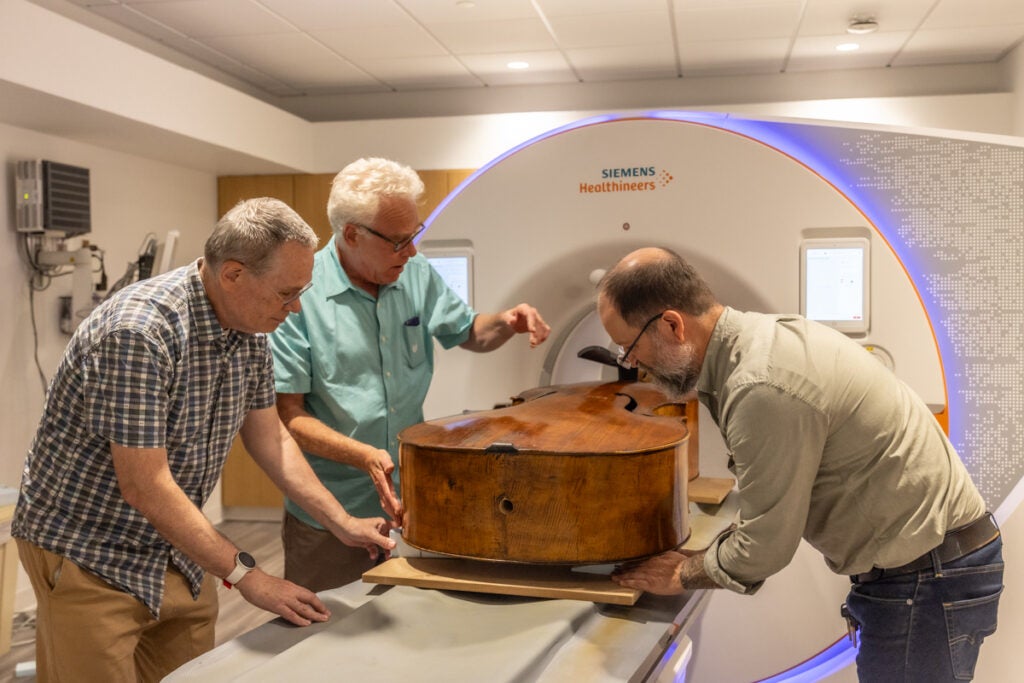
Noël said scanning and examining these precious string instruments is one of his most exciting research projects to date, but people have asked him to scan all kinds of objects over the last decade.
“The combination of things you get to scan is amazing,” he said.
As CT technology has advanced to provide more precise imaging and machines have been made to accommodate larger objects or patients, Noël said it’s opened the door to more unique projects.
Sometimes, these projects have been more scientific, like examining the skulls of various animals to learn more about their evolution. Other times, they’ve been practical, such as helping people building an aircraft check the quality and density of wood they were using to make the plane’s propellers.
And once in a while, it’s just about satisfying a curiosity.
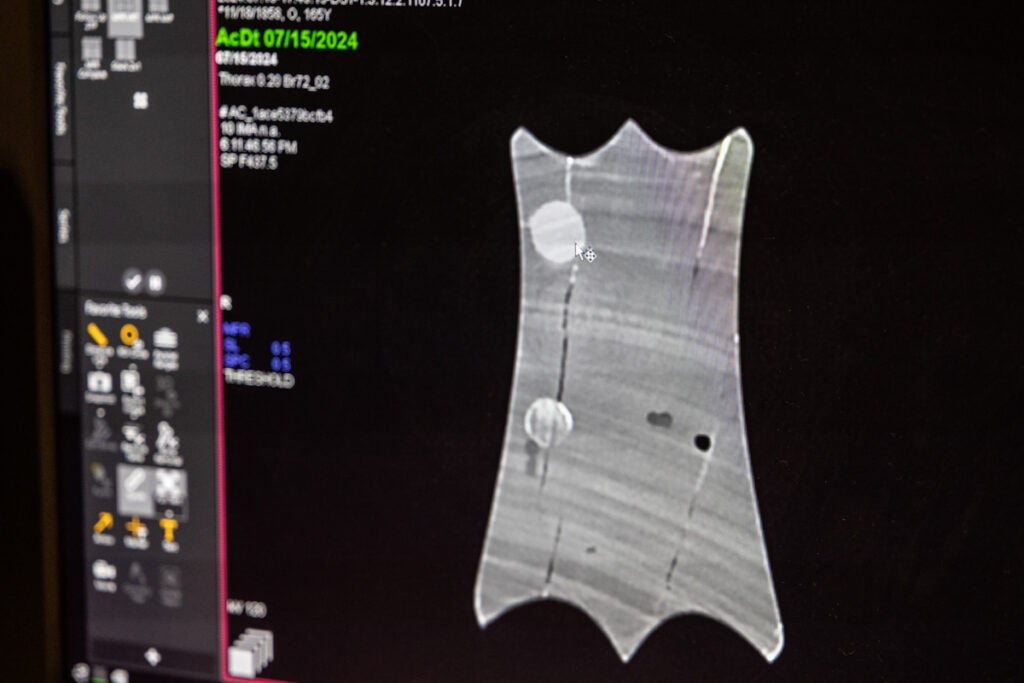
“When my daughter was maybe 4 or 5, she had all these stuffed animals, and she was always wondering what they looked like inside,” Noël said. “I took her to work on a Saturday and we scanned all her stuffed animals to find out. I’ll be honest, there was some disappointment because there’s nothing inside.”
From behind glass windows in a viewing room at the Hospital of the University of Pennsylvania, PhD student Liu remotely guided the 19th-century double bass in and out of the CT scanner.
Black and white images soon popped up on the computer monitors. Noël and the team of researchers, musicians, luthiers, bass makers and enthusiasts excitedly began discussing what they were seeing, what other angles they needed to examine, and what more they could discover about this handcrafted instrument and its former lives.
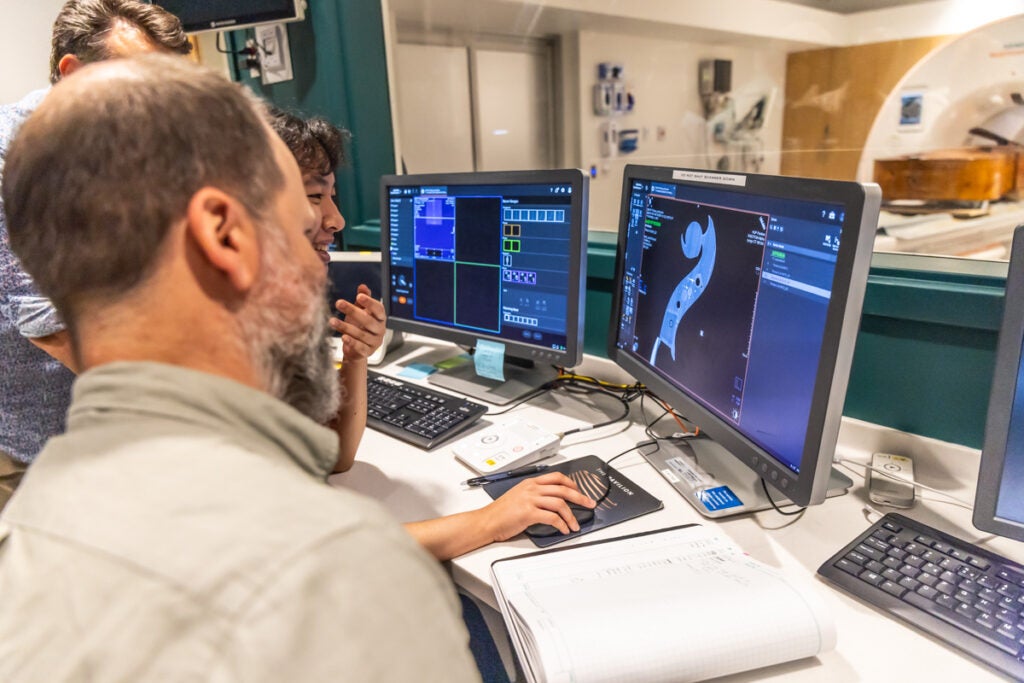
“You know, you learn that this maybe was a mast of a ship before, or maybe it was a table in Bavaria. We don’t know,” Noël said. “So, I think these stories make this so unique, and that’s why I think it’s worth any minute of doing this.”
The final CT scans on the rare bass show clear images of annual growth rings in the wood, which can signify how old a tree was when it was cut down. The team hopes to send these images to experts who study tree rings — dendrochronologists — to see if they can trace back the exact origins of this instrument, and maybe learn a little more about how it has withstood the test of time.

Get daily updates from WHYY News!
WHYY is your source for fact-based, in-depth journalism and information. As a nonprofit organization, we rely on financial support from readers like you. Please give today.


